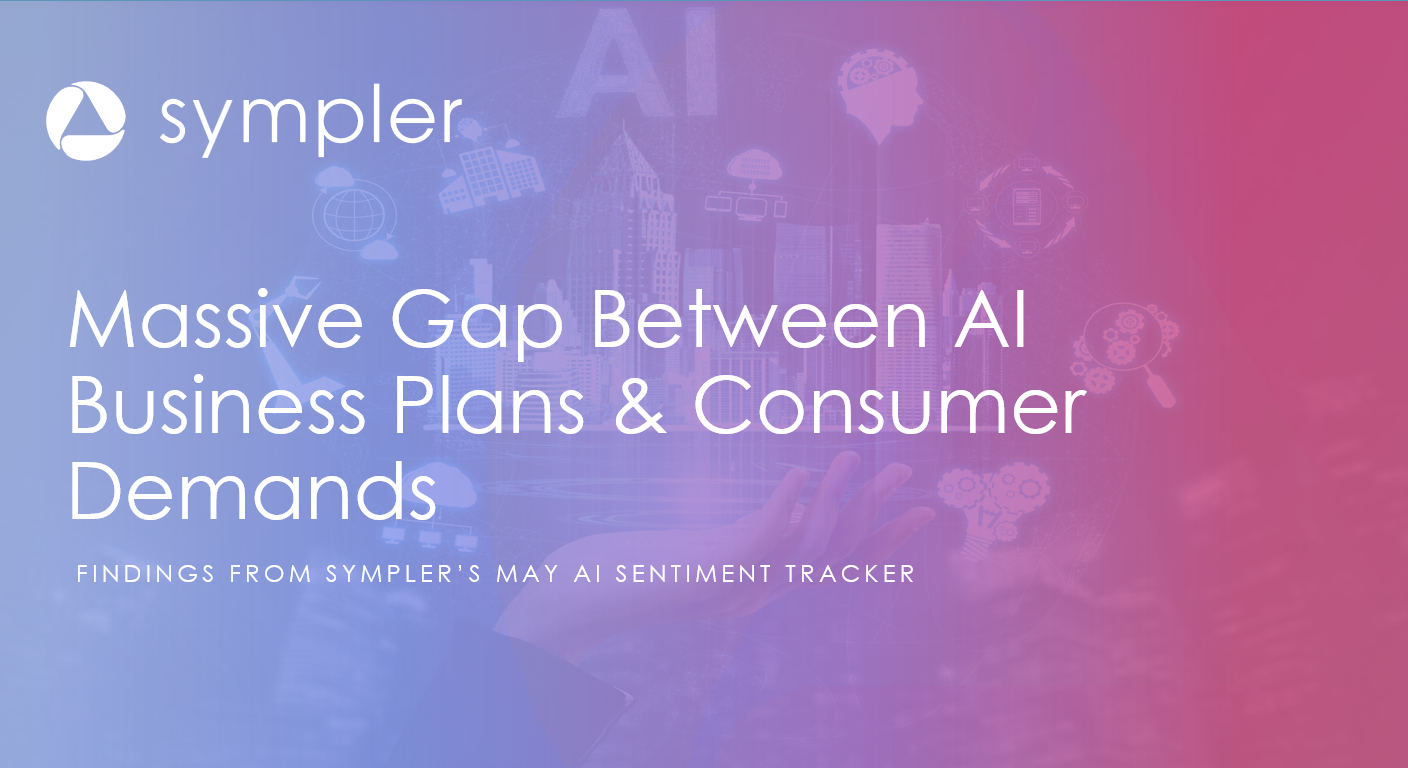Creativity That Grows Markets
Co-authored by Stagwell Technologies and Sympler
In an excellent article recently published by P&G’s Chief Brand Officer Marc Pritchard, the importance of growing markets and the role of creativity in achieving this growth was highlighted. “Growing markets is the highest order ambition because it attracts more people into the market,” says Pritchard. “This contributes to economic growth and inclusion that’s good for business and society.”
One age-old question when discussing how to drive growth is whether to capitalize on the market that already exists or grow a new audience/market where one is not openly apparent. This leads to two very different and divergent strategies:
- To capitalize on markets that already exist, brands rely on mining existing segments and product insights, often migrating share from competitors, and ultimately ramping up CRM to make existing customers more valuable over time. Their goal is not to overtly grow a market (aka create new users) but simply to own a larger share than anyone else. This strategy can be effective but often results in share wars where brands fight for the same customers, making acquisition costs high and customers open to migration through pricing wars and switching promotions.
- Opening new markets is harder and can take longer - but it can be far more profitable over time. To open new markets, brands identify new insights that create previously unstated reasons why a product/service is relevant. Perhaps these are existing issues that have not found a solution, or these are new, never-before-communicated issues that suddenly give rise to problems people did not know they had. There are many examples of this - including obvious ones like iPhone, Uber, Airbnb, and Red Bull. Did energy drinks exist before Red Bull? Did people think they needed them? Sure, it was called coffee (and Jolt - a soda born in 1985 delivering a stimulant for students and young professionals). But Red Bull (who also launched in the late '80s as a drink that cured jet lag) currently utilizes the tagline “Red Bull gives you wings” which was probably derived from the insight that went something like “Energized people can accomplish amazing things and lifts them above everyone else”. Coffee wasn’t saying this. Coffee was the morning drink, not the ‘I can do anything’ elixir. So Red Bull was born, and with it, a new category.
What is particularly interesting when new markets are created is that after they are created, the solution/product seems so obvious that one wonders why nobody had thought of it before. After all, the insight was right in front of our noses the whole time - but at the same time, hidden. So why aren’t new markets created all the time? Why aren’t insights mined and weaponized to bring new solutions to consumers on a regular basis?
Historically, drive, money, confidence, and yes, luck were the core ingredients used to enter new markets. Market research always played a role in understanding consumer needs, but acquiring that data quickly, affordably, and at scale was always difficult to achieve. And assuming all these things were aligned and working together, success was not guaranteed. For example, many great products are launched and then fail because consumers aren’t yet ready - only to find those same products (or clones) succeed years later when the innovation now lines up with consumer needs.
So new methods have been adopted to ensure the insights, demand, timing, and scale all match up to give new market creation a fighting chance. Companies now rely heavily on dynamic ethnographic data + creative insights + CX driven technology to drive an innovation agenda. When all three of those things work in harmony, the results are potent.
The Role of Creativity:
In his article, Pritchard cites creative insights, creative inclusion, and creative impact as three areas that enable growing markets. Taking all three, one by one:
- Creative Insights lead to creative breakthroughs through the collection of new data points from online assets and online media environments, including (but not limited to) DTC commerce, contextual content, social media and commerce platforms, apps, games, and publisher sites. Combining these analytics with human intuition helps uncover insights that elevate the brand experience and can be manifested through a variety of new data collection points that deliver improved commerce experiences, environmental UX/UI, personalized content, and respectful opt-in utilities that create new brand value.
- Creative Inclusion is more vital than ever because brands should understand, respect, and deliver products and experiences that match needs within the context of consumers' lives. Personal factors such as age, gender, race, ethnicity, socioeconomic situation, gender identity, and geography must be considered when serving consumers with greater precision. This precision will allow new market growth to be unlocked.
- Creative Impact can be considered an output of insights and inclusion. Impact creates interest, interest creates action, action creates discussions, and discussion creates audiences. Yes, brands should strive for assets that communicate the superior performance and value of the product, but also, to elevate how those brands move customers through touchpoints with ease and respect all the while acknowledging data previously gathered in a respectful and helpful manner.
The Role of Data:
Pritchard also emphasized the importance of the “Wow, I-never-thought-about-it-that-way” type of insights that lead to creative brilliance. We all know insights are not created equal - and many insights are not insights at all. While the word ‘insights’ is now usually met with a cringe or perhaps an eye-roll with its overuse, we understand its integral role in guiding ideation, validating and refining concepts, and empowering brands to expand and grow with confidence. That is, assuming the right questions are asked, to the correct audience, and within an environment that fosters vulnerability and honesty.
And then the takeaways: sure, majorities are important - but many times, the magic is revealed in the minority. The unexpected. The unlikely. The, “I never thought about it that way.”
Consumer responses, thoughts, and behaviors are readily available on the surface. But revealing true underlying emotional drivers, embarrassing confessions, messy contradictions, and greater nuance that is true to every human being is exactly what brands need to identify those new insights that create previously unstated reasons why a product/service is relevant (looking at you again, Red Bull).
The Role of Technology:
With the support of AI, MVPs, performance marketing, and modernized internal data collection systems, brands have an expanding canvas to reach more people in engaging and innovative ways – faster and less expensive than ever before.
Companies have adopted technology products as ways to supplement and even, in some cases, partner with traditional hard goods. In time, it's hard to imagine traditional products existing without their supplemental technology sisters and brothers. One example that comes to mind is Disney’s FastPass, allowing guests to more efficiently “book” their place in a ride without having to wait. This technology was introduced incredibly in 1999 and has since been replaced and updated post-pandemic to Genie+ costing between $15 and $25 per person per day. Genie+ claims an AI algorithm that predicts crowd levels and a guest’s desired rides to provide a day agenda – and yes – helps get guests to the front of the lines using Lightning Lane. The point is, could we imagine going to a Disney Park without this technology whatever the name, form, and features? No, we can’t. Technology has created a new revenue stream and is embedded in the park experience, making it just as much Disney as Space Mountain.
To accomplish these types of product augments and upgrades, many companies have invested considerable funds over the lifespan of their technology stack to ensure their customer-facing systems are keeping up with expectations. The fact is, unfortunately, many stacks are no longer equipped to meet demand, and the speed at which customer expectations are shifting, makes it difficult for enterprises to maintain the staff and the right technology infrastructure necessary to keep them relevant. So - Frankenstein stacks become common - systems where add-ons, patches, and side projects become the way to solve short-term demand while longer-term issues are pushed to another day.
Bringing it all together:
When technology and insight-driven CX work together, audiences are expanded, new profitable markets are created, and KPIs are delivered.- Increased Customer Loyalty: When customers have positive experiences with a brand, they are more likely to become loyal customers. Loyal customers continue to make repeat purchases and act as advocates, recommending the brand to others.
- Customer Retention: Effective CX strategies result in exceeding customer expectations, ensuring they have a positive experience throughout their journey with the brand. This leads to higher customer retention rates, as satisfied customers are less likely to switch to a competitor.
- Increased Customer Lifetime Value: When customers have a positive experience with a brand, they tend to engage more frequently, make larger purchases, and remain customers for a longer duration. This increases the customer lifetime value (CLV), which is the total revenue generated by a customer over their relationship with the brand.
- Market Differentiation: In saturated markets with many competitors offering similar products or services, CX can be a crucial differentiating factor. By providing a superior customer experience, brands can distinguish themselves from competitors and create a unique selling proposition.
- Upselling and Cross-selling Opportunities: When brands have a deep understanding of their customer's needs and preferences gained through effective CX strategies, they can identify adjacent products and services that meet existing and hopefully evolving customer demand.
Wrapping Up
Stagwell Tech and Sympler help companies leverage creativity, data, and technology to serve - dare we say it – the underserved. Perhaps a brand is underserved because the right insights have not yet been discovered and acted upon. Perhaps audiences have been underserved because we have not yet used creativity, data, and technology to best leverage (for example) 1P data to help make buying decisions easier or how AI can help recommend solutions faster and with greater accuracy.
Regardless of the application, Stagwell Tech and Sympler believe markets can grow when creativity, data, and technology are in sync and optimized to deliver new brand benefits to consumers.


